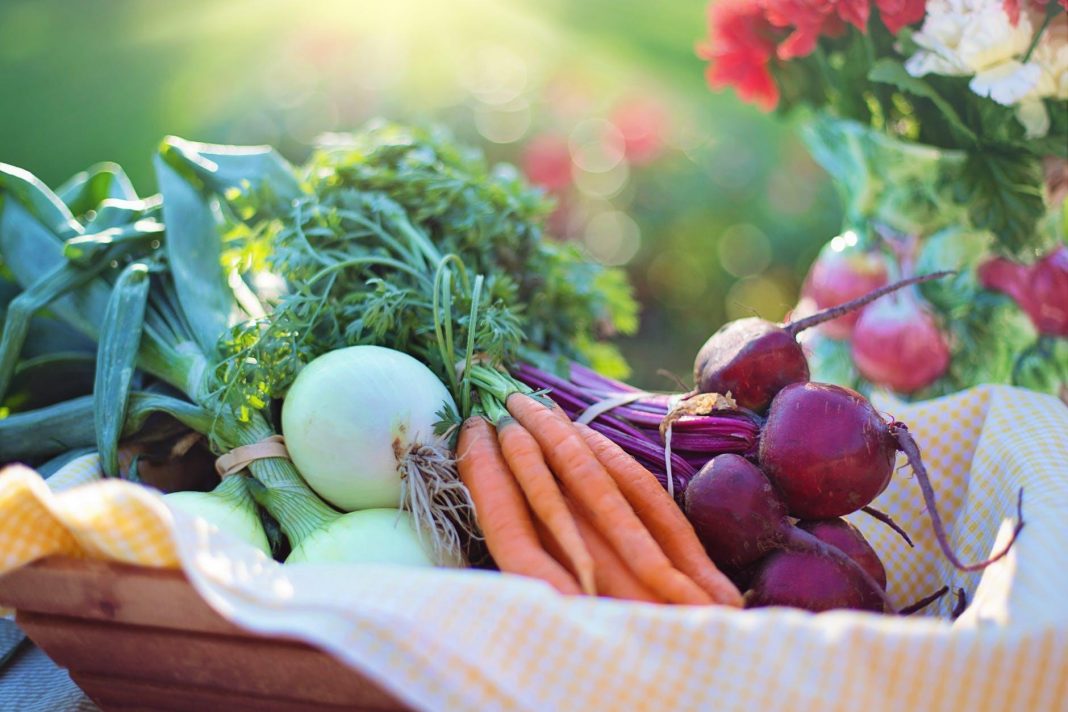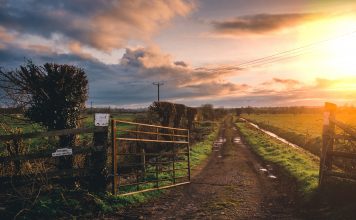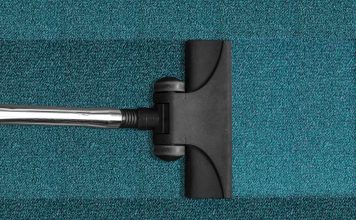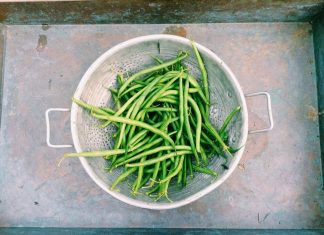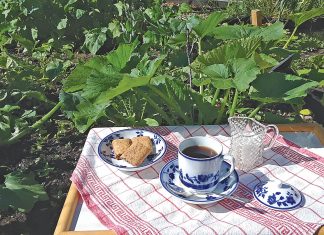By Alice B. Yeager Tomatoes are a boon to mankind in health benefits. It doesn’t matter whether they are the large or small varieties. |
 |
| Issue #93 • May/June, 2005 |
When we dig in our gardens, we never think about the possibility of turning up a vessel containing rare old coins. That has actually happened on some farms in England as well as elsewhere. A friend of ours, Mollie MacLaren (now deceased), worked as a bookkeeper for an English farm co-op where several pots of old Roman coins were discovered when uncultivated land was plowed and put into production. Fortunately, the pots had been sealed and buried upside down so that no moisture collected inside the vessels.
Let your imagination revert to the time of the Roman conquest of England and think of the circumstances that must have prompted someone to conceal coins so that they might be of use later. Who buried the pots and what happened to him? No one knows.
Probably the only hidden treasure we modern-day gardeners will turn up is Fido’s bone if he is allowed to go near the garden area. If Fido is a diligent hoarder of bones, we may find several of his treasures carefully buried here and there. Moreover, I’ll bet Fido knows where every one is stashed and doesn’t take kindly to seeing his reserves being discovered.
If you look at things in a philosophical sense, there are treasures to be had from every garden plot. Nutritious food full of vitamins and minerals tops the list and from there it goes on to include health benefits like fresh air, exercise, and the pure joy of growing and using your own homegrown produce. Compare the wonderful taste of ripe tomatoes harvested from your garden with the flavor of tomatoes that have to be picked before they ripen in order to be firm enough to survive the trip from a faraway field to the produce section of the supermarket.
Nowadays antioxidants are often mentioned as being helpful in cancer prevention and heart disease as well as a number of other problems that come on when our immune systems are weak. Antioxidants are a combination of vitamins, minerals, amino acids and others that help to protect our bodies from a number of things, all the way from air pollution to the effects of some of the foods we eat, such as charcoal-cooked meat.
Fortunately, antioxidants don’t have to be obtained from something rare and tropical, putting them out of the reach of most of us. Instead, two of the most frequently named sources high in antioxidants are as close as our own gardens or a local produce stand featuring homegrown fruits and vegetables. They are blueberries and tomatoesboth easily grown in a home garden. If space is limited, however, I’d suggest planting the blueberry bushes where crowding is not a problem.
Blueberries
Blueberry bushes can tolerate full sun or partial shade. They need a fairly loose soil rich in humus with pH 5.0-6.0. This is akin to a woodsy setting where foliage shed from trees is constantly breaking down and feeding understory plants. Blueberries don’t do well in heavy clay-like soil or boggy ground.
|
Follow instructions that come with the plants as to planting depth, spacing, etc. Be generous when digging holes. Fill in around plants with plenty of loamy soil, water well and step back. The bushes will settle in and do their part. If you live in an area where drought is a problem, be sure to water young plants when they begin to show signs of stress. A good organic mulch at planting time with frequent additions of leaves, pine needles, etc., is very helpful. Once they are well established, blueberry bushes usually need a minimum of care. Spring planting is recommended for blueberries.
Tomatoes
Tomato plants, being tender annuals, cannot stand temperatures down in the 30s. If the thermometer goes to almost freezing or below, you can count your plants out. Even with cover or other protection, you’ll be lucky to pull the plants through. Even then, they may get such a setback that they will be stunted or produce poorly.
The good part about growing tomatoes is that they will thrive in almost any garden if the owner follows a few simple rules. Full sun is preferable to partial shade. A few tomatoes may be had in partial shade, but the plants are sun lovers and need at least 6 hours of sunlight per day to produce a decent crop. If you live in an area where the summer season is short or in an area where there is heat and a lot of humidity, check out tomato varieties that do well under cool or humid conditions. Know the difference between “determinate” and “indeterminate” varieties. The former usually needs no staking and tomatoes ripen earlier than the indeterminate ones that definitely need tall stakes. However, you’ll harvest more tomatoes from the tall varieties as the vines will usually bear throughout warm weather.
Soil should be well worked before planting. Don’t expect much from any plant that goes into a spot where the only loose soil is the tiny hole dug just big enough to stuff the roots into it. Loosen soil in the planting area so there is no question about room for roots to grow. After planting, an organic mulch is recommended to keep soil from crusting or washing away during downpours.
I am sure that there are gardeners who plant tomato seeds and others directly in the ground, but tiny plants are susceptible to a number of soil hazards, the chief one being damping-off. This causes seedlings to either die as they emerge from the soil or wilt and fall over after they come up, and there is no cure for it. Seeds may be treated with various chemicals before planting, but even that does not guarantee immunity to damping-off.
The best thing to do is to plant tomato seeds in sterilized potting soil inside your house or greenhouse a few weeks before it’s safe for tender plants to go outside. (This also applies to any tender garden annual that can be transplanted.) Give them plenty of TLC and watch them grow. The whole family can share in this, and you’ll be surprised how sharp young eyes can be when learning the difference between one seedling and another.
As mentioned, tomatoes are high in antioxidants. They’re also a good source of lycopene. That’s the substance that gives certain fruits and vegetables their red color and has been reported to be effective in inhibiting the growth of some types of cancer cells.
Cool season crops
While acclaiming the good points of blueberries and tomatoes, it would be negligent to overlook a number of other home garden treasures that go a long way toward maintaining our well-being. Some of them are not high on a list of preferred foods, but they can be delicious when properly prepared. These vegetables generally grow best in cool seasons and include collards, broccoli, cabbage, kale, mustard greens, turnip greens and a number of other member of the cruciferous group. With the exception of cabbage, the others listed are particularly high in Vitamin A. This is the vitamin that fights off infection and is a “must” for healthy bones, eyes, skin, teeth, etc.
With the exception of mustard greens and turnip greens, it is more practical for some of us to start plants such as cabbage and broccoli indoors, setting them out at the proper planting time. Most greens can simply be thinly sown in rows or beds as they don’t need a good deal of space between plants. Just follow instructions on seed packets and don’t forget to mulch to keep plants from being splashed with dirt when heavy showers come along. No one likes gritty vegetables.
Remember being told to “Eat your carrots” when you were a youngster? Hopefully, by this time you have learned of the great health benefits contained in these orange treasures and include them quite often in your menu. The flavor contained in home-grown carrots far exceeds that of the carrots lying in bags on the produce shelves.
Eaten cooked or raw, carrots are a powerhouse of antioxidants. Like many other brightly colored vegetables, they contain super amounts of Vitamin A as well as lesser amounts of Vitamins C, D, E, G and K. Calcium and phosphorus are there, too.
When it comes to seasoning many of our dishes, what’s better to recommend than garlic? It can be used in soups, stews, casseroles, saladsalmost everything but sweets. Garlic is effective in lowering blood pressure and it’s a natural blood thinner, helping to prevent blood clots that cause heart attacks and strokes.
Anyone can find room to grow garlic as it can be tucked in along fences, corners of the garden and anywhere not being used for other plants. It’s a perennial and will come up year after year. In the South, we plant garlic cloves 2 – 3 inches deep and let a few cloves remain in the ground when we harvest. That way, we don’t have to replant each year. In the North where winters are severe, garlic should be planted deeper. Also, it might be advisable to harvest all of the cloves and replant each spring.
It would be impossible in a single article to touch on all plants that are real treasures where good health is concerned. Folks who are interested in maintaining a healthy lifestyle should avail themselves of a book giving information on health benefits of vitamins, minerals, etc., and keep it handy when planning for a garden. Select a book that is easy to understand and not one that is written in lofty terms.
Keep in mind that the best garden soil will have a pH of 6.0 – 8.0 and most vegetables, melons, and some fruit trees will find this range to their liking. One thing about it, if you have never gardened, you’ll never know until you try as to what measure of success you’ll have. Gardening opens up an entirely new world. It is now at the top of the list of outdoor activities. The treasures are there. You just have to find them.
Carrot-orange salad
1 cup light or dark raisins
1-½ cups grated carrots
1 large orange
¼ cup mayonnaise
1 Tbsp. fresh lemon juice
1 tsp. sugar
¼ tsp. salt (optional)
lettuce
Put raisins in a small bowl and cover them with boiling water. Let stand about 5 minutes. Drain off water and allow raisins to cool.
Peel orange and divide into sections. Discard any tough membranes. Cut sections into small cubes. Combine raisins, carrots and orange.
In a small bowl, lightly beat together mayonnaise, lemon juice, sugar, and salt. Stir into carrot mixture. Let chill in refrigerator about 30 minutes. Serve on lettuce. Makes about 4 servings.
Cabbage slaw
1 medium head cabbage, grated
1 medium onion, grated
1 cup mayonnaise or salad dressing
2 Tbsp. sugar
2 Tbsp. vinegar
2 tsp. celery seed
½ tsp. salt
Combine cabbage and onion in mixing bowl. Thoroughly mix rest of ingredients together being sure sugar is dissolved. Lightly combine with cabbage and onion. Let chill in refrigerator for at least an hour before serving. Stir occasionally. This makes about 6 or 8 servings.
This is a basic recipe. Other items such as bell peppers, carrots, cucumbers, etc., may be chopped and added to slaw. Add your own touch.


